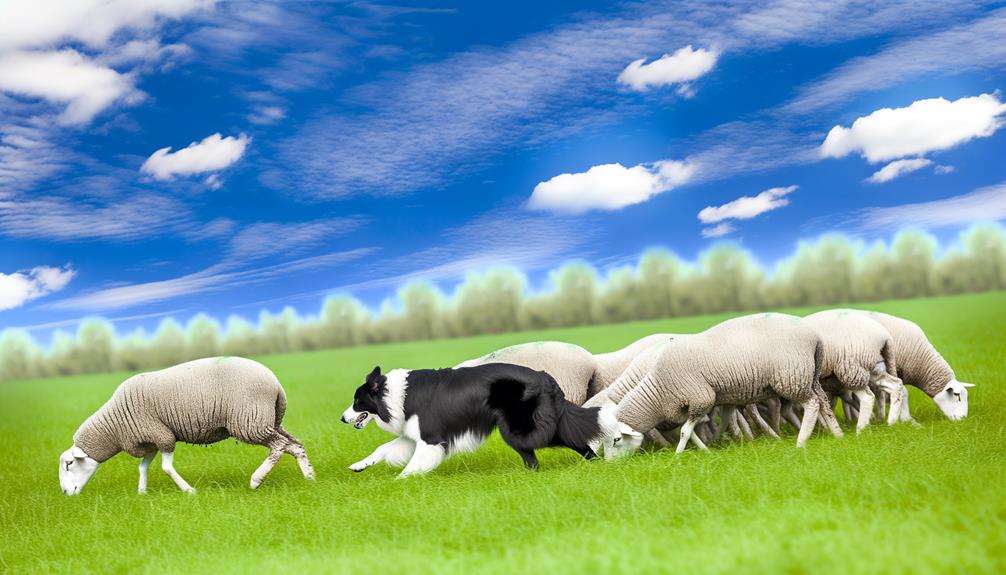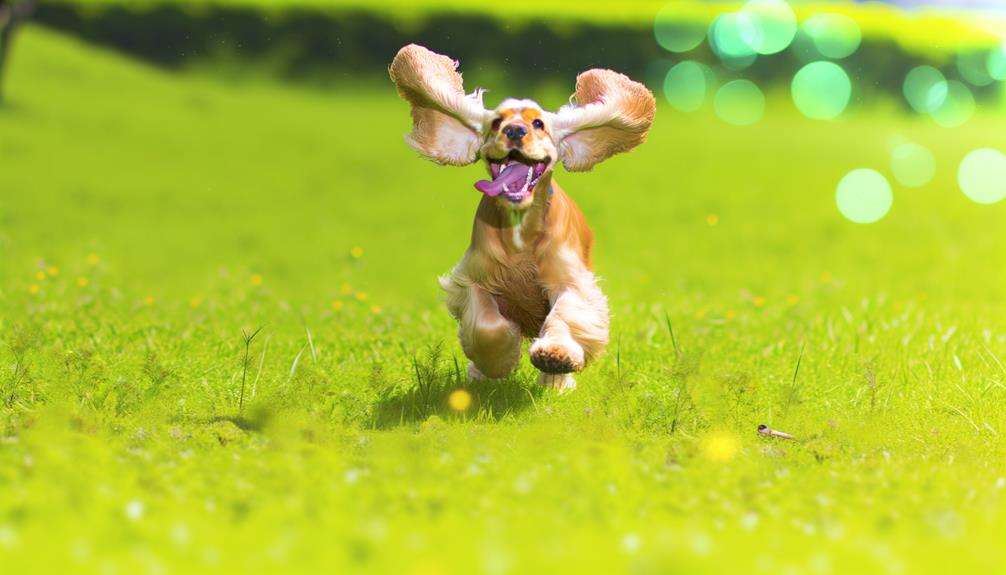Curious about what makes Golden Retrievers such cherished family companions? Discover the intriguing history and endearing traits that have endeared these dogs to millions of households worldwide.
From their humble beginnings in Scotland to their versatile roles as service animals, Golden Retrievers possess a unique charm that goes beyond their wagging tails and warm eyes.
Delve into the secrets of these beloved canines and unlock a deeper understanding of why they truly are man's best friend.
Key Takeaways
- Golden Retrievers are renowned for their friendly and gentle temperament, making them ideal family pets.
- Their intelligence and trainability enable them to excel in various roles, such as service and therapy dogs.
- Regular exercise, grooming, and proper nutrition are essential for maintaining their physical health and well-being.
- Early socialization and consistent positive reinforcement techniques are crucial for fostering a strong bond with Golden Retrievers.
History and Origins
Golden Retrievers' history and origins can be traced back to their development in the year 1868 when they were specifically bred for hunting purposes on a Scottish estate. Golden Retrievers are often considered good family pets due to their placid, fun-loving, and faithful companionship.
This breed, for the first time, emerged from a mix of a Hunting Dog and a Tweed Spaniel, which contributed to their unique characteristics. Their role as hunting dogs with a gentle and friendly temperament has made them beloved family pets.
The origins of Golden Retrievers are deeply rooted in their breeding for hunting, where their lively nature and eagerness to work shone through. Despite being excellent hunters, they quickly transitioned into family life, where their adaptability and sociable demeanor made them a popular choice.
This historical background sheds light on the breed's innate qualities that continue to make them cherished companions in households worldwide.
Temperament and Personality
Golden Retrievers exhibit a friendly and gentle temperament, making them excellent companions for both families and other pets. Their loyal and affectionate personality drives them to seek approval and form deep connections with their owners.
This breed's playful and loving nature adds to their appeal, especially in interactions with children and other animals.
Friendly Nature Traits
Characterized by a gentle and friendly demeanor, the temperament of Golden Retrievers makes them highly sought after as family pets. Their friendly nature isn't just a surface-level trait; it's deeply ingrained in their genetic makeup. This breed's ability to effortlessly connect with humans and other animals helps unravel the mystery behind their popularity as family companions.
Golden Retrievers exhibit a remarkable level of patience and calmness, which is particularly beneficial when interacting with children and other pets. Their sociable and loyal disposition extends beyond their immediate family members to strangers, making them well-suited for roles as therapy and service dogs. With the right training and socialization, Golden Retrievers adapt seamlessly to various environments and lifestyles, further solidifying their status as the family's best friend.
Playful and Loving
Exhibiting an innate inclination towards playfulness and affection, the temperament and personality of Golden Retrievers are characterized by a delightful blend of sociability and loyalty. Their playful antics, coupled with a deep capacity for loving companionship, establish strong family bonds that endure through generations.
Golden Retrievers are renowned for their ability to engage in lively activities, making them ideal companions for families seeking an interactive pet. Their loving nature shines through in their interactions with both adults and children, fostering a sense of closeness and trust within the household.
Intelligence and Trainability
Golden Retrievers showcase remarkable problem-solving skills and excel in tasks requiring high trainability. They swiftly grasp new commands, demonstrating their innate intelligence and keen ability to learn complex tasks. This makes them ideal candidates for various roles, such as service dogs, therapy companions, and search and rescue missions. Their eagerness to please, exceptional memory, and quick understanding of behaviors contribute to their reputation as one of the smartest and most trainable dog breeds.
Their innate intelligence and keen ability to learn complex tasks make them ideal candidates for various roles, such as service dogs, therapy companions, and search and rescue missions. Their eagerness to please, exceptional memory, and quick understanding of behaviors contribute to their reputation as one of the smartest and most trainable dog breeds.
Golden's Problem-Solving Skills
Demonstrating exceptional problem-solving abilities and remarkable trainability, Golden Retrievers consistently showcase their intelligence in various tasks and roles. When faced with problem-solving challenges, these dogs excel due to their cognitive enrichment and responsiveness to mental stimulation techniques. Their high ranking as the fourth smartest dog breed by Stanley Coren validates their adeptness in understanding and executing tasks. Golden Retrievers' strong work ethic and eagerness to please make them ideal candidates for service and therapy roles. Positive reinforcement training methods are crucial for effectively harnessing their problem-solving skills. Below is a table summarizing the key aspects of Golden Retrievers' problem-solving skills:
| Aspect | Description |
|---|---|
| Intelligence | Ranked fourth smartest by Stanley Coren, excelling in problem-solving tasks. |
| Trainability | Quick learners with a strong work ethic, eager to please their owners. |
| Adaptability | Versatile in various roles, including service and therapy dog positions. |
| Training Effectiveness | Respond well to positive reinforcement training methods for optimal development of problem-solving abilities. |
Trainability for Tasks
With their innate intelligence and impressive trainability, Golden Retrievers excel in mastering a wide range of tasks efficiently and effectively. Their remarkable abilities in task performance and behavior modification stem from their eagerness to please and loyal nature.
Training techniques play a crucial role in enhancing their mental stimulation, allowing for optimal problem-solving and skill development. When working with Golden Retrievers, consider the following to evoke emotion in your furry companion:
- Engage in interactive play sessions to stimulate their cognitive abilities.
- Utilize positive reinforcement methods to encourage desired behaviors.
- Incorporate puzzle toys to challenge their problem-solving skills.
- Provide structured training sessions to enhance their focus and obedience.
- Offer a variety of tasks to keep them mentally sharp and engaged.
Learning New Commands
When teaching new commands to a Golden Retriever, consistency and positive reinforcement are essential for maximizing their intelligence and trainability. Golden Retrievers showcase advanced obedience skills due to their high intelligence and eagerness to please.
Their mental agility allows them to quickly learn and retain a wide range of commands. Training techniques that focus on positive reinforcement are particularly effective with this breed, as they respond well to rewards and praise.
To enhance their learning capabilities, incorporating mental stimulation into training sessions is crucial. Golden Retrievers have been successfully trained for complex tasks such as therapy work, search and rescue missions, and providing assistance to individuals with disabilities, highlighting their exceptional intelligence and trainability in mastering new commands.
Physical Characteristics
Golden Retrievers typically exhibit a well-proportioned physique with an average height ranging from 21 to 25 inches and a weight falling between 55 to 75 pounds. To ensure your Golden Retriever stays healthy and happy, consider the following essential aspects of their physical characteristics:
- Coat Maintenance: Their double coat requires regular grooming to manage shedding and maintain a healthy skin and coat.
- Dietary Needs: Providing a balanced diet of 8-15 oz (1-2 cups) of food daily is crucial for their overall well-being and weight management.
- Weight Management, Exercise Requirements: Regular exercise is key to keeping your Golden Retriever at a healthy weight and ensuring their physical fitness.
- Joint Health: Due to their predisposition to arthritis and hip dysplasia, incorporating joint health supplements into their routine is vital for their long-term mobility.
- Grooming Essentials: Utilizing appropriate tools and supplements like The One can help in maintaining their coat's health and resilience against shedding and environmental factors.
Health and Care Needs
To ensure optimal health and well-being for your Golden Retriever, it's essential to address their specific health and care needs diligently. Golden Retrievers are prone to joint issues such as arthritis and hip dysplasia, necessitating proactive joint health management through supplements and regular veterinary check-ups.
Moreover, their double coat requires meticulous shedding management, achieved by consistent grooming with appropriate tools to prevent matting and maintain skin health.
In terms of dietary needs, Golden Retrievers generally require a daily intake of 8-15 oz (1-2 cups) of high-quality dog food to support their energy levels and overall health. It's crucial to monitor their food intake to prevent obesity, a common issue in this breed. Consider incorporating supplements like The One to enhance their resilience and well-being, ensuring they receive essential nutrients for a balanced diet.
Socialization and Interaction
Proper socialization and interaction play a pivotal role in shaping the behavior of Golden Retrievers towards other animals, particularly cats. Early exposure to feline friends is essential for behavior modification and the development of social skills in Golden Retrievers. Positive interactions during the puppy stage can significantly impact how a Golden Retriever perceives and interacts with cats throughout its life. When supervised correctly, these interactions can foster trust and understanding between the two species, leading to harmonious relationships within a family setting. By consistently exposing Golden Retrievers to cats and providing positive reinforcement, they can learn to respect feline boundaries and body language. Gradual introductions are crucial for building a foundation of acceptance and friendship between Golden Retrievers and cats, ensuring a peaceful coexistence.
Building trust between them can create heartwarming bonds.
Positive experiences can lead to lifelong friendships.
Understanding each other's cues fosters mutual respect.
Harmonious relationships bring joy to both pets and owners.
Shared moments of play and relaxation strengthen their connection.
Exercise and Activity Levels
Transitioning from socialization and interaction, the exercise and activity levels of Golden Retrievers are crucial aspects that significantly impact their overall health and behavior.
Golden Retrievers thrive on outdoor adventures, requiring a minimum of 1-2 hours of exercise daily to maintain their physical and mental well-being. Engaging in activities like fetching games, obedience training, and agility exercises not only fulfill their exercise needs but also provide mental stimulation.
Indoors, Golden Retrievers can benefit from interactive toys and puzzle games that challenge their intelligence and keep them entertained. Canine sports such as agility courses or competitive obedience can be excellent outlets for their energy and drive. Regular physical activity is vital to prevent obesity, manage their energy levels, and prevent behavioral issues.
Golden Retrievers as Working Dogs
Golden Retrievers demonstrate exceptional versatility and reliability as working dogs in various fields due to their loyal, smart, and eager-to-please nature. These qualities enable them to form strong working partnerships and excel in a wide range of job responsibilities.
In canine careers, Golden Retrievers play crucial roles such as:
- Service Dogs: Guiding the visually impaired or providing emotional support to individuals in need.
- Search and Rescue Missions: Utilizing their strong hunting instincts to locate missing persons in challenging environments.
- Detection Work: Excelling in detecting drugs, explosives, and medical conditions like cancer through their keen senses.
- Therapy Services: Offering comfort and companionship in healthcare settings to enhance the well-being of patients.
- Assistance Tasks: Assisting individuals with disabilities in daily tasks, showcasing their adaptability and intelligence in various practical roles.
Golden Retrievers truly shine as working dogs, making a significant impact in diverse fields with their unwavering dedication and remarkable skills.
Bonding With Your Golden Retriever
Establishing a strong emotional bond with your Golden Retriever is crucial for fostering a harmonious and fulfilling companionship. Building trust with your furry friend involves understanding canine behavior, spending quality time together, and creating a secure environment. Check out the table below for some key strategies to strengthen your connection with your Golden Retriever:
| Key Strategies | Description |
|---|---|
| Spend Quality Time Together | Engage in activities like play, training, and walks to enhance the bond with your retriever. |
| Use Positive Reinforcement | Consistency, patience, and positive reinforcement techniques are vital for building trust. |
| Understand Body Language | Learn to interpret your Golden Retriever's body language and signals to deepen your bond. |
Frequently Asked Questions
What Is the Most Common Cause of Death in Golden Retrievers?
Cancer is the leading cause of death in Golden Retrievers. Genetic predispositions make them susceptible to various types like hemangiosarcoma and lymphoma. Health conditions such as mast cell tumors are common. Environmental factors can influence their risk.
What Is the Number 1 Friendliest Dog?
When it comes to friendliness, the number 1 dog breed is the Golden Retriever. Their love for dog parks and socialization, positive training techniques, and keen understanding of canine communication and body language make them top companions.
What Two Breeds Make a Golden Retriever?
Labrador Retrievers and Tweed Water Spaniels were bred to create the Golden Retriever. The Labrador Retriever ancestry contributed to the breed's retrieving skills, while the Tweed Water Spaniel's genetic traits enhanced their friendly and gentle nature, resulting in the beloved family companion we know today.
Why Do Golden Retrievers Put Their Paw on You?
When Golden Retrievers place a paw on you, it's a form of canine communication. This gesture signifies social bonding and a desire for affection. By placing their paw on you, they seek human interaction and establish physical contact, often as a learned behavior for attention.
Conclusion
In conclusion, you have unraveled the secrets of the Golden Retriever, a loyal and intelligent companion bred for hunting in Scotland.
Remember, 'a dog is a man's best friend' and with proper care and attention to their physical and emotional needs, you can build a strong bond with your furry friend.
Understanding their history, temperament, and health requirements will ensure a fulfilling and rewarding relationship with your Golden Retriever.






